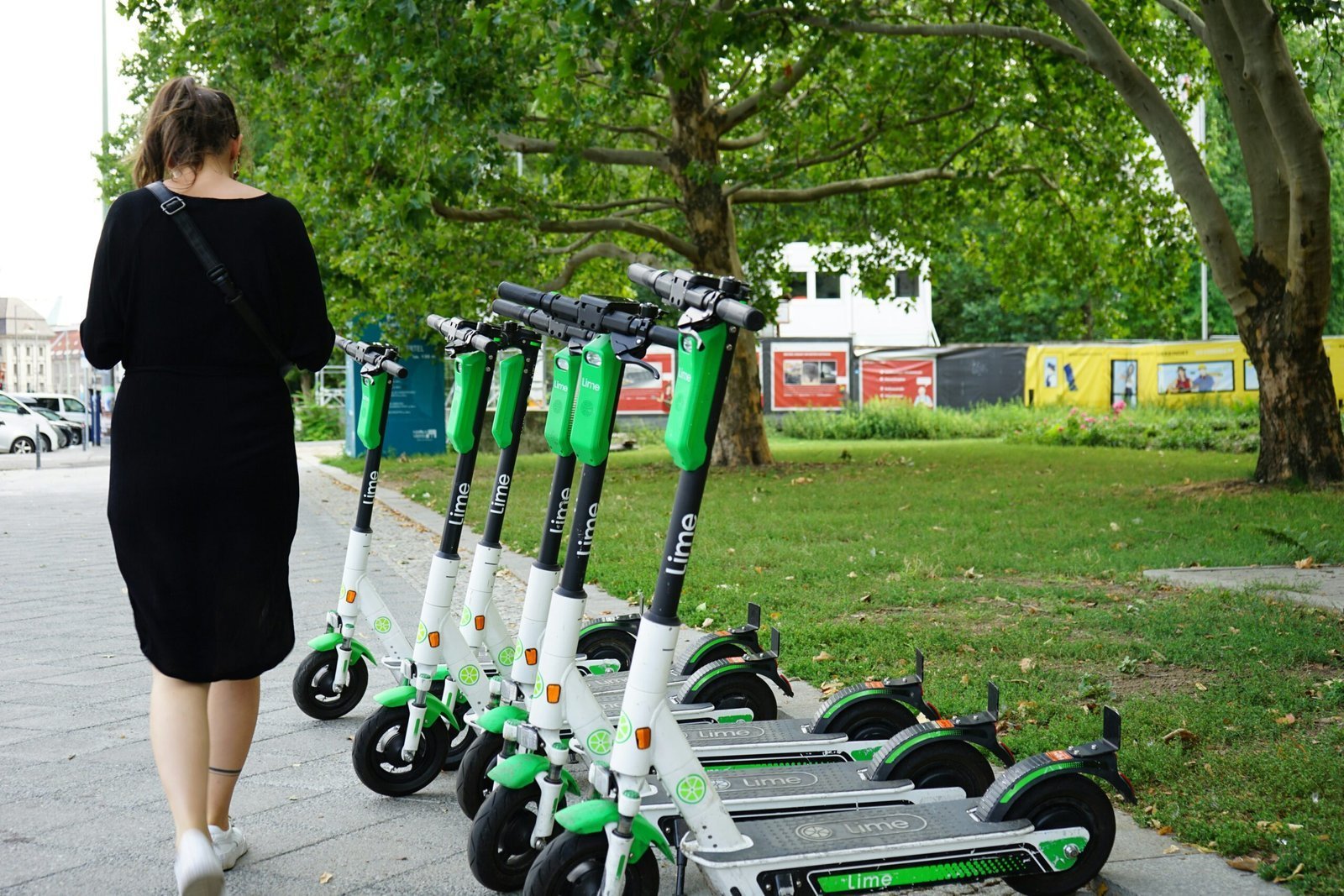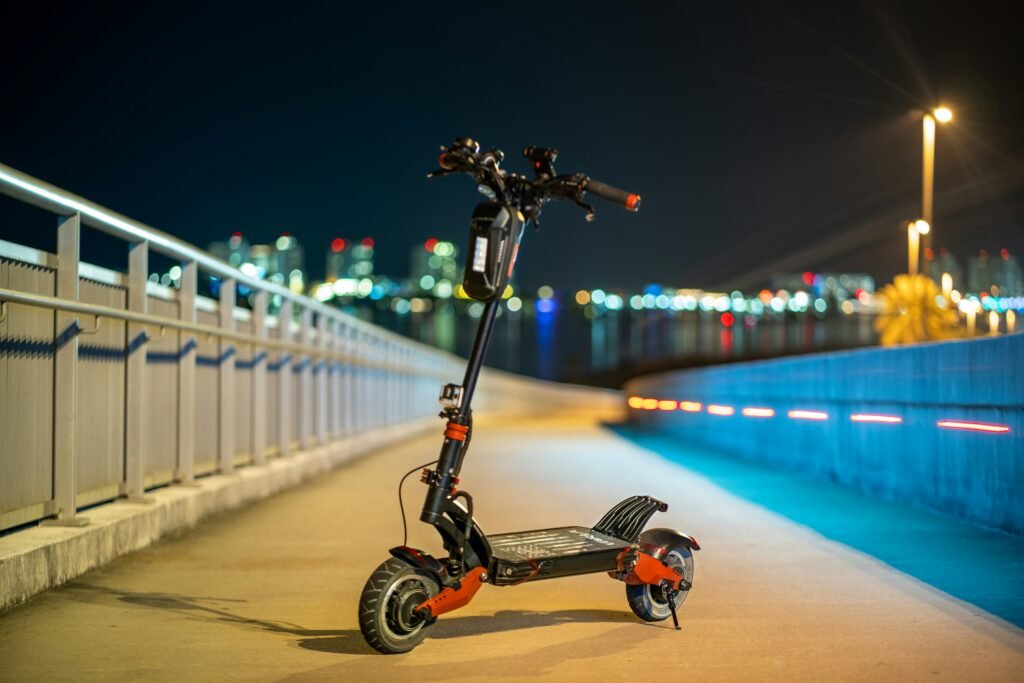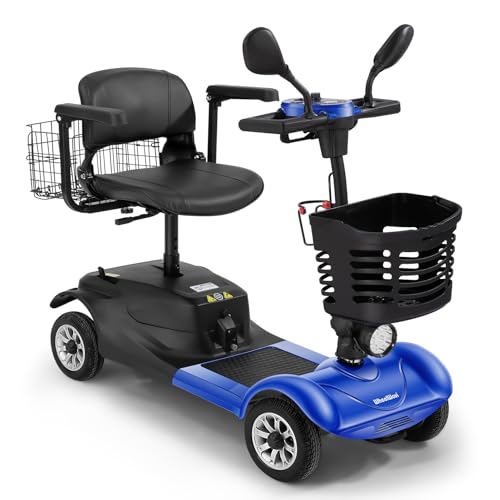
Introduction to Electric Scooters
Electric scooters, also known as e-scooters, have rapidly gained popularity in urban settings, offering a convenient and eco-friendly alternative to traditional forms of transportation. These innovative vehicles are powered by electric motors and are designed for short-distance travel, making them suitable for commuting, recreation, and on-demand sharing services. Emerging as a significant player in the transportation landscape, electric scooters address urban mobility challenges by providing a nimble solution to congested streets and reducing reliance on fossil fuel-powered vehicles.
The rise of e-scooters correlates with the growing demand for sustainable transport solutions, as cities grapple with issues such as traffic congestion, rising pollution levels, and the need for effective last-mile connectivity. Electric scooters are particularly relevant in this context, as they can be easily integrated into existing public transportation networks. With the ability to cover short distances swiftly, these scooters effectively serve as an interim option between public transport stations and final destinations, enhancing overall mobility within cities.
This blog post aims to provide a comprehensive exploration of electric scooters, delving into their history, various types, current usage trends, and future developments. By examining the evolution of e-scooters and their role in modern urban environments, readers will gain valuable insights into why they have become a vital mode of transportation. As we journey through these topics, we will highlight the benefits and challenges of integrating electric scooters into everyday life, paving the way for a deeper understanding of their impact on urban living.
A Brief History of Electric Scooters
The electric scooter has undergone significant evolution since its initial conception. The earliest iterations appeared in the late 19th century, primarily as modified bicycles powered by electric motors. These early models were rudimentary, lacking the design characteristics and functionality we associate with electric scooters today. However, they laid the groundwork for future advancements in personal electric transport.
In the mid-20th century, several key developments marked the emergence of more sophisticated electric scooters. The introduction of portable batteries and lightweight materials allowed for more agile designs. During the 1990s, the electric scooter began to gain mainstream visibility with the introduction of models that catered specifically to urban commuting. This period saw companies like Razor, founded in 2000, innovate by creating foldable scooters that appealed to both children and adults.
As the new millennium progressed, electric scooters became an integral part of urban mobility concepts. The transition from gas-powered scooters to electric variants was accelerated by environmental concerns and the growing demand for sustainable transport solutions. The introduction of advanced lithium-ion battery technology significantly enhanced the performance and range of these scooters, making them a viable alternative for short-distance travel.
By the 2010s, electric scooters had gained substantial popularity around the globe, catalyzed by the rise of shared mobility platforms. Companies such as Bird and Lime revolutionized urban transport by introducing scooter-sharing services, which encouraged users to adopt electric scooters for daily commutes. The focus on eco-friendly transport and the convenience offered by electric scooters contributed to their growing acceptance. Consequently, they became synonymous with urban mobility as cities began adapting infrastructure to accommodate this rising trend.
Types of Electric Scooters
Electric scooters have gained popularity for their convenience and eco-friendliness, effectively catering to a wide range of user needs. The variety of electric scooters on the market can generally be categorized into three main types: commuter scooters, off-road scooters, and folding scooters. Each category serves distinct purposes, and understanding their features can help consumers choose the best option for their specific requirements.
Commuter scooters are designed primarily for urban travel, featuring a streamlined design that prioritizes portability and efficiency. These scooters typically have a lightweight frame and a modest range of 15 to 25 miles on a single charge, making them ideal for daily commutes. They often come equipped with solid tires, basic suspension systems, and integrated lights for safety. Commuter scooters are best suited for individuals navigating city environments, seeking reliable and practical solutions to reduce their carbon footprint while avoiding the challenges of traffic congestion.
Off-road scooters, on the other hand, are constructed for rugged terrains and unpaved surfaces. These models boast enhanced durability, stronger frames, and larger, all-terrain tires that provide better traction and stability. Additionally, off-road scooters typically offer higher power outputs, allowing them to tackle steep inclines and uneven ground. Enthusiasts who enjoy outdoor adventures or require an electric scooter for challenging conditions will find off-road models appealing, as they often come equipped with advanced features such as long-range batteries and shock absorption systems.

Folding scooters represent the ultimate in portability and convenience, designed to be easily collapsible. This feature allows users to transport their scooters with minimal effort, making them suitable for public transportation, storage, or travel. Folding scooters usually feature robust construction but compromise slightly on performance compared to their commuter and off-road counterparts. They are excellent options for city dwellers or commuters who may need to store their scooters in tight spaces or want to take them along on public transit without hassle.
Where Can You Use Electric Scooters?
Electric scooters have gained immense popularity as an eco-friendly transportation solution, especially in urban areas. Cities worldwide have started integrating scooters into their existing transportation networks, allowing citizens to easily navigate through crowded streets. Their compact design makes them particularly suited for urban commuting, as they can be parked conveniently in smaller spaces, avoiding the need for extensive parking areas. Additionally, several municipalities have established specific paths and lanes dedicated to electric scooters, enabling safer and more efficient travel.
Besides urban settings, electric scooters are ideal for recreational use in parks and green spaces. Users can enjoy a leisurely ride while taking in the natural surroundings. Some parks even provide designated scooter paths, ensuring a pleasant experience free from vehicular traffic. Furthermore, sandy beaches have emerged as another popular location for electric scooter usage. Many coastal cities have introduced rental services that allow beachgoers to ride scooters along boardwalks or beach paths, enhancing accessibility to picturesque locations.
When considering the use of electric scooters, it is crucial to be aware of local regulations. Different regions may have specific rules regarding the age of riders, weight limits, and speed caps. Riders should consult local laws to ensure compliance and to enhance their safety. Moreover, safeguards should be observed when navigating various terrains, such as bumpy paths or steep inclines, which may require appropriate skill levels and attention. It is advisable to wear protective gear to mitigate risks, especially in challenging environments.
In conclusion, electric scooters offer versatility, functioning effectively in urban areas, parks, and beaches. Their legality and safety depend heavily on adherence to local regulations, making it essential for riders to stay informed about the specific guidelines applicable to their region. By being conscious of these factors, users can maximize their experience while contributing to a sustainable approach to transportation.
Current Trends in Electric Scooter Usage
The increasing popularity of electric scooters has significantly reshaped urban transportation dynamics across the globe. Recent studies indicate a surge in electric scooter adoption, particularly in metropolitan areas, where congested streets demand efficient and eco-friendly alternatives. According to a report from the International Transport Forum, electric scooter usage surged by approximately 400% from 2018 to 2022 in cities that embraced this mode of transport.
Demographics of electric scooter users reveal a diverse range of individuals. While younger adults aged 18-34 constitute a significant portion of the user base, an emerging trend shows increased usage among older adults seeking convenient options for short-distance travel. This demographic shift indicates that electric scooters cater to a wider audience than initially perceived, promoting an inclusive approach to urban mobility.
The establishment of scooter-sharing programs has been instrumental in this trend. Cities around the world have witnessed the launch of various electric scooter-sharing platforms, allowing users to conveniently access scooters on demand. This approach reduces the need for ownership, appealing to those who prefer flexibility and cost-effectiveness. Recent statistics suggest that over 60% of electric scooter users in established sharing programs utilize them for commuting to work or school, thereby alleviating public transport congestion during peak hours.
Despite the advantages of electric scooters, challenges persist. Municipalities face the task of developing regulations that ensure the safety of riders and pedestrians while accommodating the growing presence of scooters on public roads. Issues such as improper parking, scooter-related accidents, and the need for dedicated lanes remain critical topics for urban planners. As cities continue to adapt to the influx of electric scooters, it is evident that these vehicles are not just a temporary trend but a lasting element of future urban transportation strategies.

The Environmental Impact of Electric Scooters
The adoption of electric scooters has collected significant attention, particularly due to their potential environmental advantages. One of the most pronounced benefits is the reduction of carbon emissions in urban settings. Traditional vehicles contribute significantly to air pollution and greenhouse gas emissions. In contrast, electric scooters operate on battery power, presenting a cleaner alternative for short-distance travel. This shift facilitates individual mobility while minimizing the carbon footprint associated with commuting.
Moreover, electric scooters have been hailed for their role in decreasing urban congestion. Cities often face the challenge of overcrowded streets caused by reliance on cars. By offering an alternative mode of transport, electric scooters can alleviate traffic pressures, fostering an environment that is more pedestrian-friendly and reducing the overall demand for parking spaces. This not only eases daily commutes but also supports the development of healthier urban ecosystems.
However, discussions surrounding electric scooters’ environmental impacts should not overlook the issues associated with battery disposal and sustainability. The production and disposal of lithium-ion batteries, which power these scooters, can pose significant ecological challenges. If not managed properly, the waste generated from used batteries could contribute to environmental degradation. Therefore, it is essential for manufacturers and consumers alike to prioritize responsible recycling and disposal programs. Additionally, ongoing advancements in battery technology may offer solutions that further enhance sustainability, such as batteries made from more eco-friendly materials.
Electric scooters hold the potential for contributing positively to urban environments, yet their ecological footprint remains a complex topic warranting considered discussion. Striking a balance between the benefits of reduced emissions and the challenges of battery sustainability is crucial in assessing the true environmental impact of this emerging mode of transportation.
Safety Tips for Riding Electric Scooters
As the popularity of electric scooters continues to grow, ensuring rider safety has become a critical aspect of urban mobility. To promote responsible riding, it is essential for users to adopt certain safety tips that mitigate risks associated with electric scooter usage.
First and foremost, wearing a helmet is paramount. Studies have demonstrated that helmets significantly reduce the risk of head injuries in case of accidents. Riders should invest in a high-quality helmet that complies with safety standards to ensure maximum protection. Additionally, it is advisable to wear bright or reflective clothing, especially at night, to enhance visibility and make oneself more noticeable to other road users.
Riders must also familiarize themselves with local traffic laws and regulations related to electric scooter use. Many cities have specific guidelines regarding where electric scooters can be ridden, the speed limits, and whether they can operate on sidewalks or dedicated bike lanes. Adhering to these regulations not only ensures personal safety but also contributes to a safer environment for all road users.
Another critical aspect of safe riding is maintaining awareness of one’s surroundings. Riders should constantly scan for pedestrians, cyclists, vehicles, and road hazards such as potholes or debris. This heightened vigilance allows for timely reactions to potential dangers, reducing the likelihood of accidents.
Lastly, it is imperative to perform routine maintenance checks on the electric scooter before each ride. This includes ensuring that brakes function correctly, tires are adequately inflated, and lights are operational. A well-maintained scooter enhances safety and reliability during use.
By following these practical safety tips, electric scooter riders can significantly decrease the risk of accidents and injuries, ensuring a safer commuting experience for themselves and others on the road.
The Future of Electric Scooters
The future of electric scooters is poised for transformative growth, driven by advancements in technology and an increasing emphasis on sustainable urban mobility. Emerging innovations indicate that electric scooters will see enhanced battery efficiency, enabling longer travel distances on a single charge. Solid-state batteries could become mainstream, offering quicker charges, improved safety, and a reduced environmental footprint compared to traditional lithium-ion batteries. The addition of smart technology, such as integrated GPS tracking and real-time diagnostics, will further enhance user experience and maintenance efficiency.

Moreover, the development of dedicated infrastructure for electric scooters is becoming a priority in many urban environments. Cities are increasingly recognizing the necessity of bike lanes and scooter paths to accommodate the growing number of riders. This infrastructure will not only improve safety for electric scooter users but also promote their integration with other forms of public transportation, thus creating a seamless urban mobility network. As cities evolve, electric scooters will play a crucial role in mitigating traffic congestion and reducing carbon emissions, driving a shift towards cleaner transportation alternatives.
Industry trends also suggest a notable increase in the adoption of subscription-based models for electric scooters, allowing users greater flexibility and access. This shift may attract a wider audience, including those who opt for short-term usage without the commitment of ownership. Furthermore, legislative changes are likely to support the standardization of electric scooter regulations, fostering a safer riding environment and addressing concerns surrounding accountability in shared scooter programs.
In conclusion, as electric scooters continue to evolve, their impact on sustainable urban mobility will become increasingly significant. By embracing technological innovations and enhancing infrastructure, cities and manufacturers can work together to shape a future where electric scooters are a vital component of urban transportation systems.
Conclusion: Embracing the Electric Scooter Revolution
As we reflect on the journey of electric scooters, it is clear that these innovative vehicles have significantly transformed urban mobility. From their humble beginnings to the modern, versatile models available today, electric scooters have become a practical alternative for short-distance travel. They offer a multitude of benefits, including reduced carbon emissions, lower operational costs compared to traditional vehicles, and the ease of maneuverability in congested urban areas. The convenience of electric scooters also extends to individuals who seek to navigate through the complexities of city traffic while minimizing environmental impact.
Moreover, the adoption of electric scooters provides a convenient solution to the challenges associated with traditional transportation. With rising fuel prices and increasing awareness of environmental issues, opting for electric scooters can lead to not only personal savings but also contribute to broader sustainability efforts. Their role in promoting cleaner air and less congested roads cannot be underestimated, especially as cities begin to prioritize eco-friendly modes of transportation.
However, it is essential to consider the implications of integrating electric scooters into everyday life. Safety regulations, parking policies, and infrastructure adequacy must evolve alongside the growing popularity of these vehicles. Users are urged to remain vigilant and adhere to traffic laws to ensure safe usage. Additionally, cities must adapt by providing more designated scooter paths and parking areas to enhance safety and accessibility.
Ultimately, the trend toward electric scooters is poised to continue its upward trajectory, as manufacturers innovate and explore new technologies to improve efficiency and performance. As individuals and communities increasingly recognize the potential of electric scooters to redefine urban commuting, it invites everyone to explore their advantages. Consider experiencing the versatility and convenience of electric scooters yourself; it’s a step toward embracing a greener, more efficient future in transportation.



